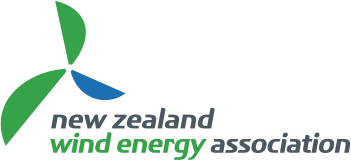Wind doesn’t blow consistently. But wind energy is not unreliable – that is a clear message from the operators of electricity grids around the world.
Many countries already accommodate large amounts of wind generation in their electricity systems. Germany and other European nations are leaders in demonstrating that large quantities of renewable energy can be reliably and cost effectively integrated onto the power system.
In 2016, Denmark reliably obtained around 40% of its electricity from wind energy, Uruguay, Portugal and Spain and Ireland over 20%, and Germany 16%. Germany, Spain, and Portugal have sizeable deployments of solar energy as well. Closer to home, South Australia has 1,475 MW’s of wind generating around 34% of their electricity needs.
Currently, wind generation provides around 6% of New Zealand’s electricity. Given the strength of New Zealand’s wind resource and the reliability of our national grid, there is no reason why wind’s contribution cannot increase to the proportions being achieved by other countries.
A report produced for the United States Department of Energy concluded that the operators of electricity grids worldwide are increasingly positive about integrating wind generation as they share best practices and learn about the successes of their peers. The authors of the report interviewed 33 grid operators, which combined manage 72% of worldwide installed wind energy capacity. The report did not identify any technical limitations to how much wind can be managed on an electricity system, but rather it came to the following conclusions:
-
Wind power forecasting is indispensable for successful wind integration.
-
Efficiently integrating wind energy into power systems requires that forecast and uncertainty information be incorporated into real-time decision support systems and planning tools.
-
Higher levels of wind generation have shown to create uncommon system condition and consequences that operators must learn to manage.
-
Efficient integration of wind energy requires grid operators to have access to a proper mix of flexible resource ranging on the supply-side, delivery-side and demand-side.
-
Smart grid technologies can aid wind integration by providing addition system flexibility.
-
Integrating wind generation could require changes in the physical grid, as well as changes in operation business processes and information technology solutions at work in in control centres.
-
Grid reliability standards and regulatory policies as well as laws enacted at the local, state, regional, national and multi-national levels affect the integration of wind generation in the control centre.
-
The industry is on the verge of a new operating paradigm as high levels of wind and other variable generation and increasing operation uncertainty become the norm today and even more so as we move towards 2030.
Read more:
- Facilitating NZ's Energy Future (Chapter 2) - Transpower New Zealand Ltd
-
The base debate holding renewables hostage - Business Spectator (Australia)
-
Strategies and Decision Support Systems for Integrating Variable Energy Resources in Control Centers for Reliable Grid Operations, Report prepared for the US Department of Energy
-
Correcting fossil fuel industry misinformation about Germany's success with renewable energy - AWEA blog
